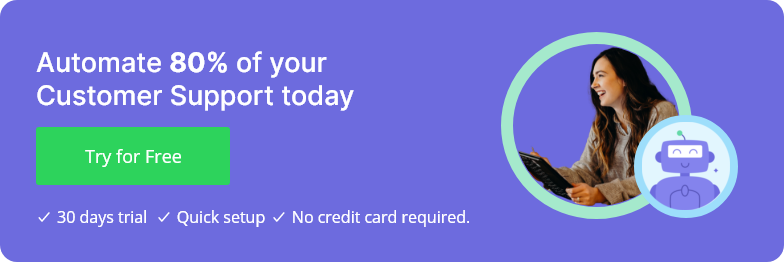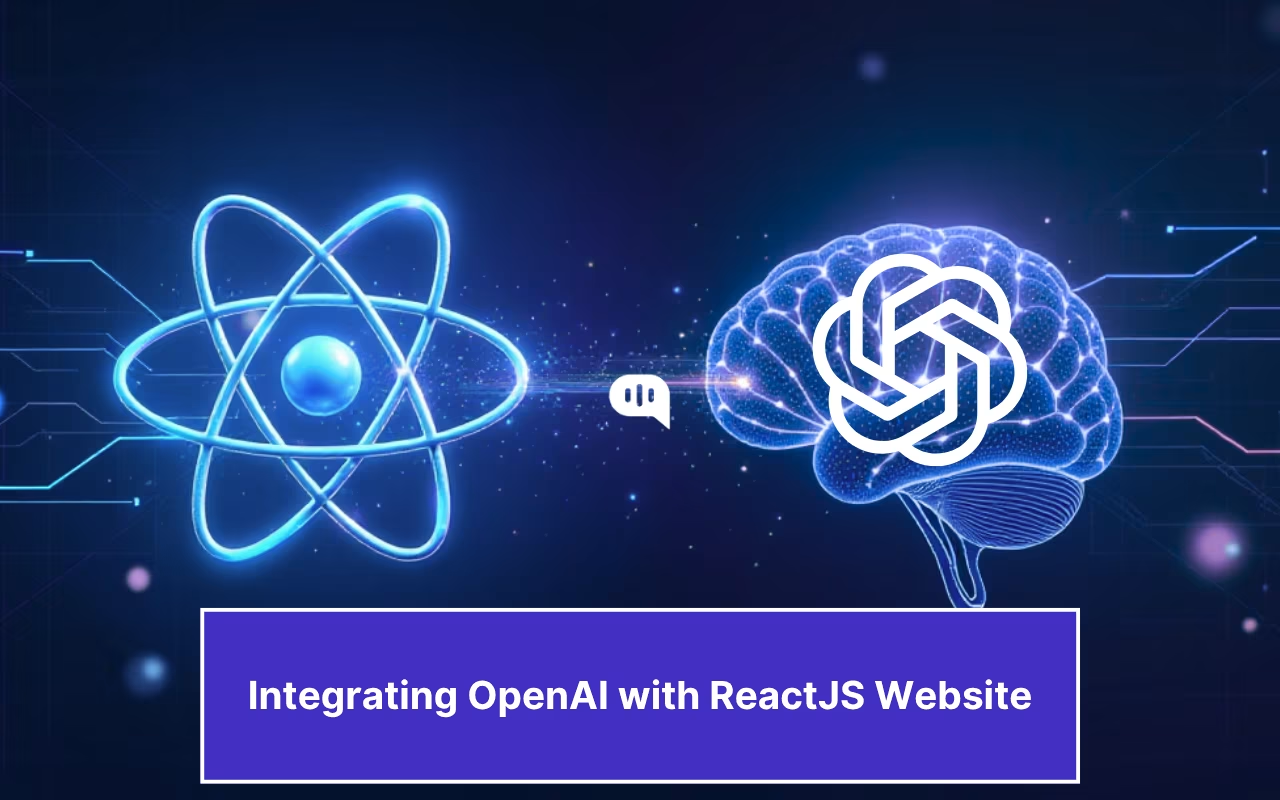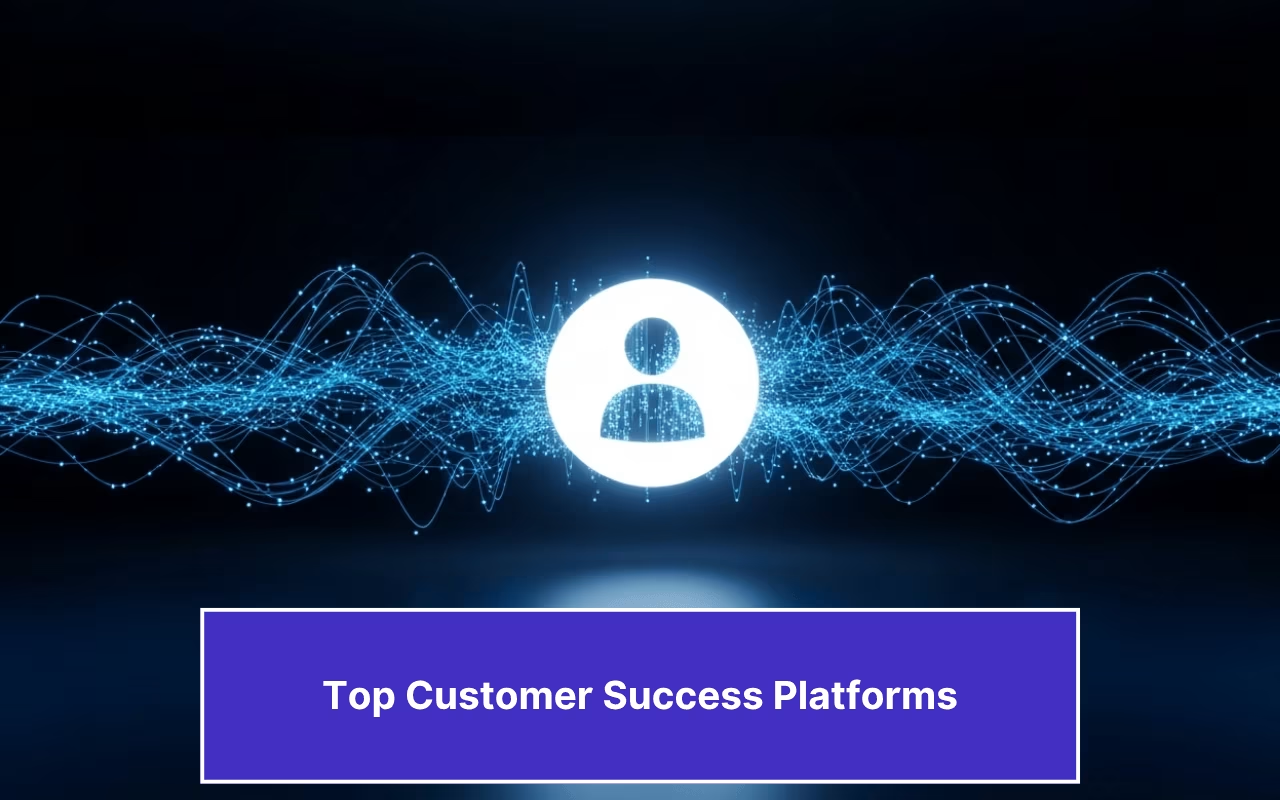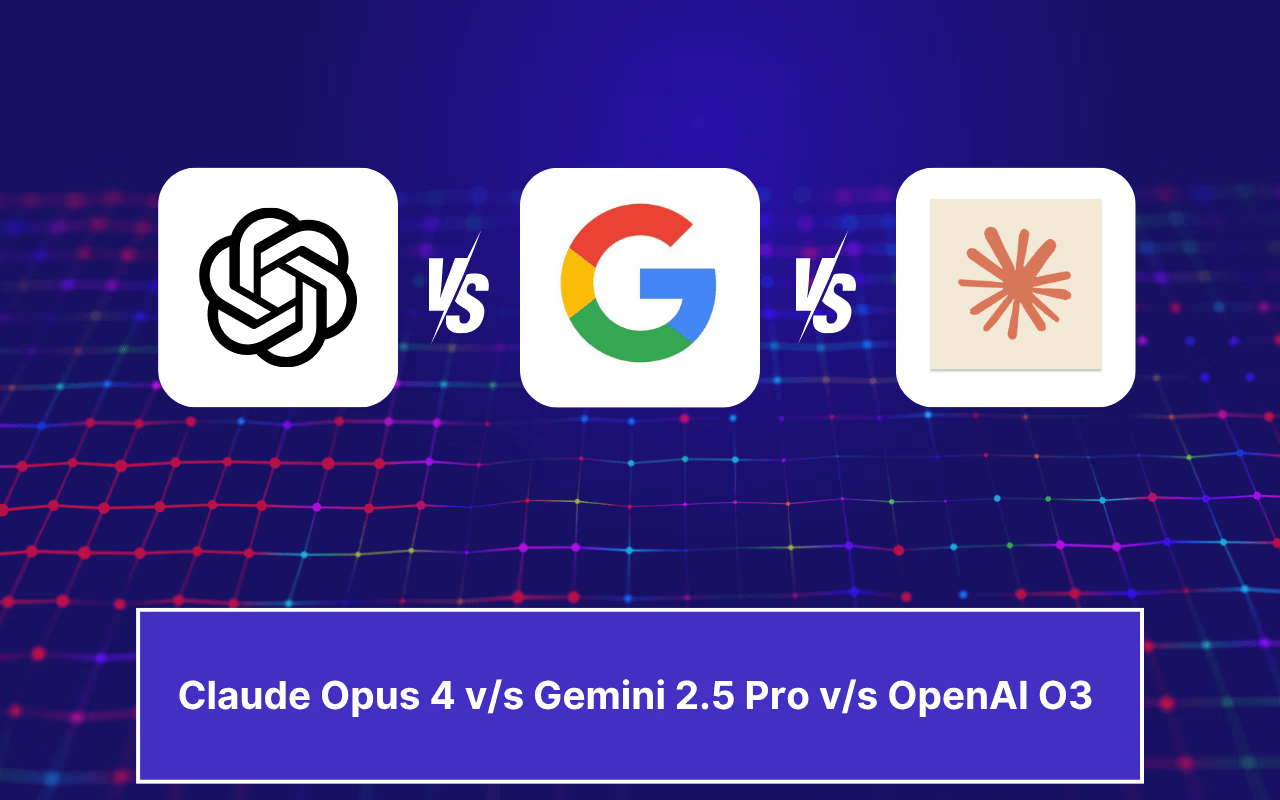Updated on May 27, 2025

AI has become an increasingly popular tool for customer service functions worldwide. This is because of its efficiency in driving better resolutions quicker while maintaining a CSAT score that is better than or comparable to human agents.
According to a HubSpot survey, 77% of customer service leaders already use AI. Among these leaders, 92% say that using AI has improved their customer service response times.
Additionally, even though CX leaders are increasingly aware of the potential of AI, around 34% of these leaders feel like their organization is ill-equipped to adopt AI for customer service.
It’s fairly apparent that people are adopting the AI-first path because it’s going to define a significant section of customer service careers and the industry going forward.
In this article, we’ll understand how you can become AI-first in your workplace as a leader. We’ll cover the following:
- Understanding AI’s Role in Customer Service
- How to Become an AI-First Customer Service Leader
- New Leadership Skills for the AI Age
- Future-Proofing your AI Customer Service Career
- Conclusion
Understanding AI’s Role in Customer Service
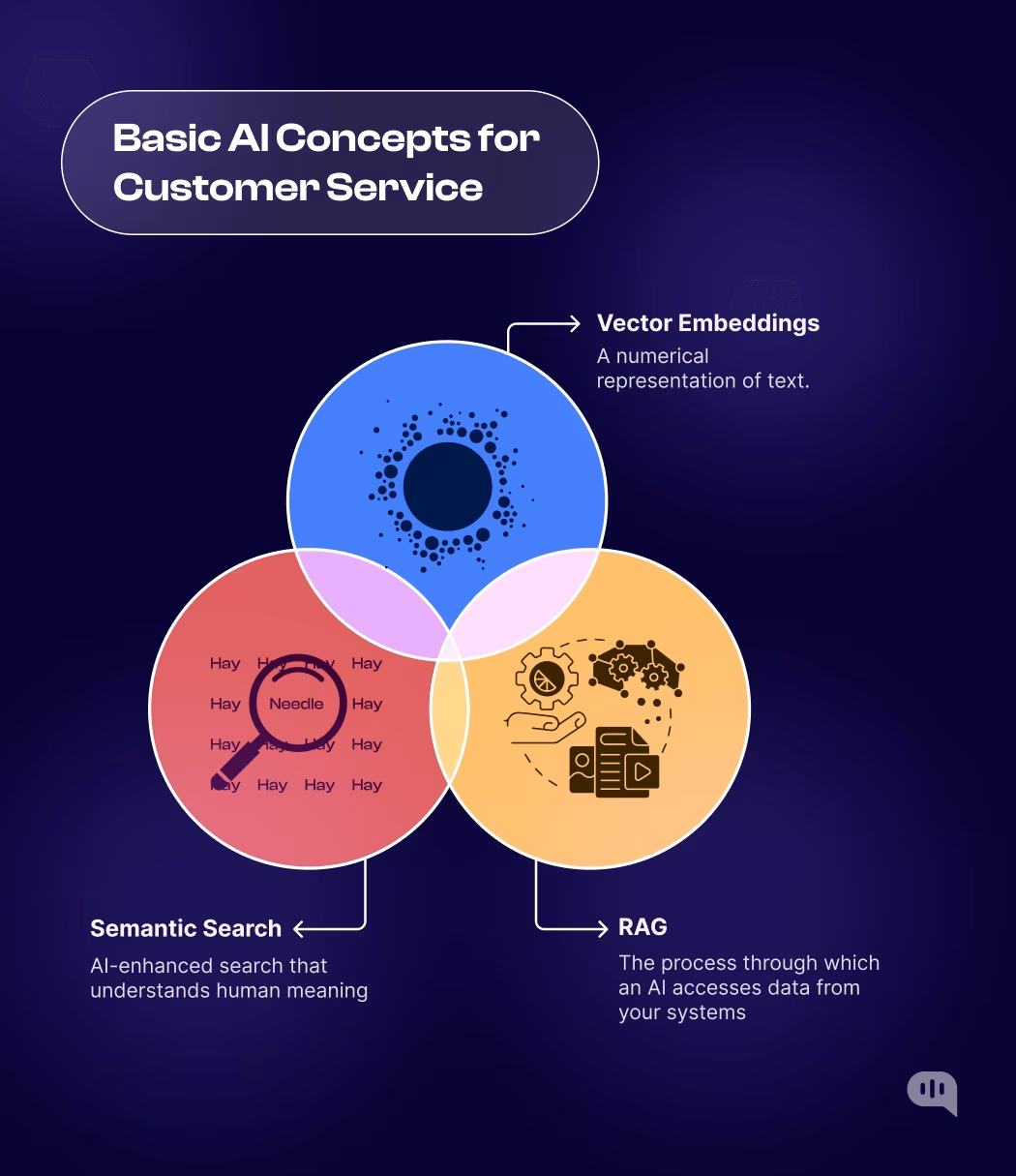
The first step to becoming AI-first lies with learning. While you don’t need to understand the complex mathematical equations and GPU architectures that power AI, it’s essential to know how AI works in the context of customer service. Here are some basics that will be helpful:
1. Vector Embeddings – This is the tool that most LLMs use to understand language. Vector embeddings take a text collection and turn it into complex numerical representations so your computer can understand the connections between words. This is a part of every generative AI tool you use, and it helps your chatbots understand human language.
2. Semantic Search – Vector embeddings enable an AI system to look beyond syntactic similarity. Practically, AI can now understand the real meaning of customer questions. Now, AI uses this understanding and performs a semantic search to find data from your backend that helps it correctly answer your customers’ questions.
3. RAG – Retrieval-Augmented Generation (RAG) is the industry-standard process through which your AI-driven chatbot gets ideas from the backend of your systems. Overall, this process helps your AI systems get the proper documentation for every answer they give to the customer and prevents hallucinations.
These three concepts are preliminary, but they provide a general overview of the current state of LLM research. They should help you better understand the promise and the challenges in AI research so that you can make informed decisions about your choices in AI tools.
We also have an in-depth guide about AI in Customer Service that will help you if you want to learn more. But, right now, let’s talk about the practical things you can do to become AI-First.
Streamline support operations, resolve queries faster, and enhance customer experience with AI-powered email ticketing from Kommunicate!How to Become an AI-First Customer Service Leader
Right now, you know the foundational technical ideas behind AI in customer service. However, every leader knows that technology covers only one part of customer service. Part of our work here at Kommunicate is in fostering change management and AI adoption in enterprises. We’ve helped industry leaders create narratives that drove this change across these organizations. Here are the four things that expert AI-first customer service leaders do:
Take Data-Driven Decisions
AI works with vast amounts of data. So, it makes logical sense that AI-first leaders should use data, too. In terms of customer service, you should focus on the following:
1. KPIs – CSAT, NPS, and CES scores will let you quantify your organization’s customer experience. Understand and chase these KPIs and aim for continuous improvement.
2. Bot-Specific Metrics – Metrics like containment rate, bot resolution rate, and first response time are direct stand-ins for the ROI you get from your chatbot.
3. Chatbot ROI – Understand the number of messages you receive daily and calculate the ROI from your chatbots.
Whenever you use AI applications, use concrete data to make your decisions. This will help you become data-first and also help you make impactful decisions.

Keep Learning
New AI launches have become relatively common, and the time between the release of foundational models is shrinking. Customer service leaders must keep learning about the new paradigms and concepts driving AI innovation.
Some publications that you can read for this are:
2. Towards AI
3. arXiV
These places contain the latest news about AI research and processes. Also, feel free to consult our Tech articles, where we explain complex AI concepts in simpler terms.
Focus on Human-AI Collaboration
As a customer service leader, you’re responsible for the tech integrations that your team pursues and the human members of your team. Understandably, many of your teammates will feel tension around their jobs as AI automation becomes more common.
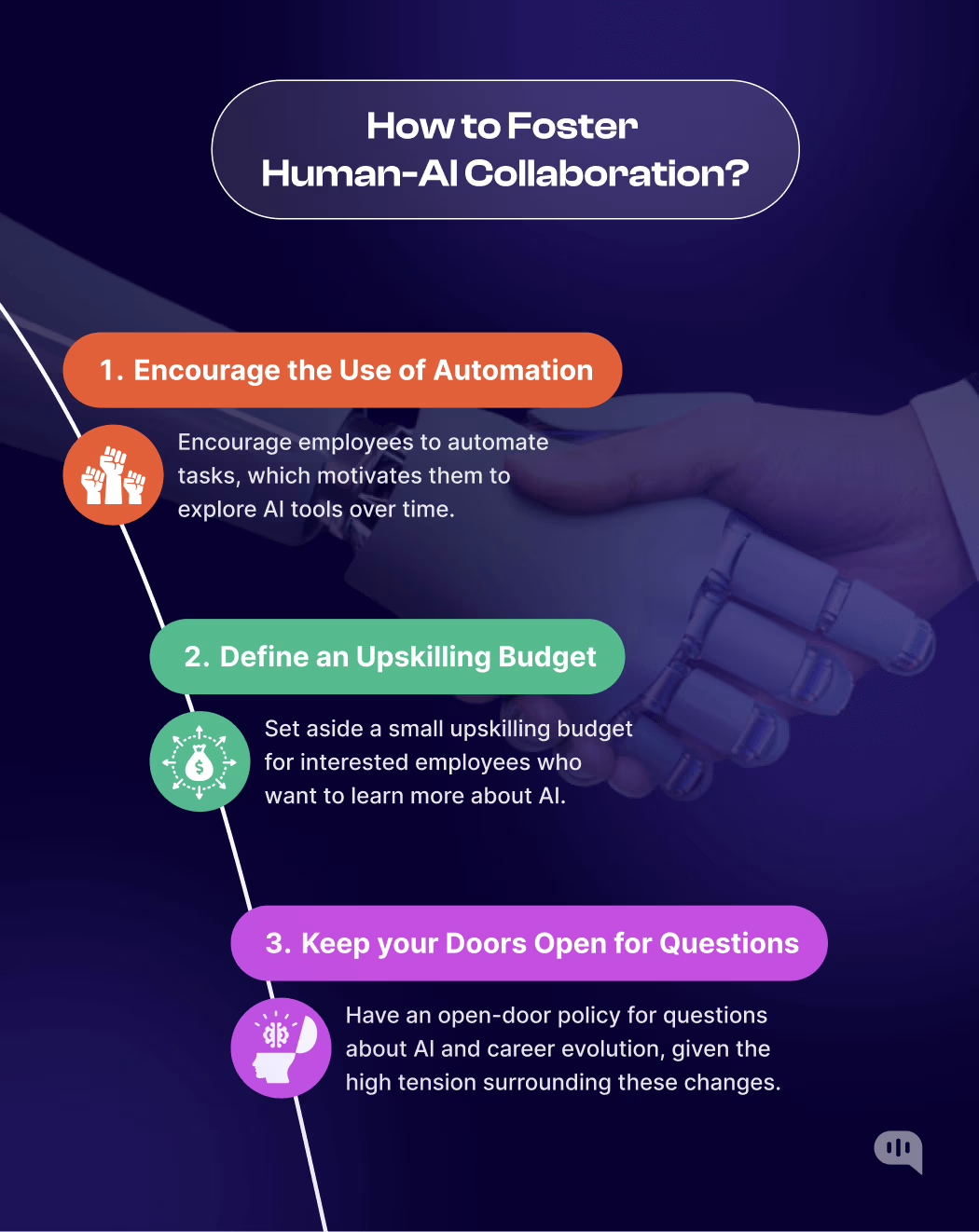
When you consider this tension, the idea of human and AI collaboration strategies should become a central part of your leadership. We have built a framework for our new joiners that might help you do this:
1. Pursue Automation: We recommend that employees try to automate some of their work. This incentivizes them to try out AI tools themselves over time.
2. Upskilling Budget: We have set aside a small upskilling budget for interested employees who want to learn more about AI.
3. Open-Door Policy: Since the tension around these innovations is high, we have an open-door policy. We allow anyone to ask us questions about AI and their careers so that they can understand how their jobs will evolve going forward.
These simple processes have helped us foster a culture of human and AI collaboration within our business.
Focus on AI Ethics
An oft-ignored part of AI is the ethics behind it. As a front-facing representative of your company, I focus on this part. Try to implement the following practices as you approach the installation of AI in your company.
1. Take Permission for AI Usage: This helps customers make informed decisions when opting for your AI-driven self-service channels.
2. Be Responsible with Data: Choose AI vendors following best-in-class data safety practices. Look for certifications like SOC2, HIPAA, and GDPR, and check their operations by verifying their ISO certifications.
3. Caution Users about AI’s Problems: Current AI models can hallucinate and give wrong information. Be honest about the capabilities of your AI tools when you use them for your customers.
4. Follow Lawsuits Around AI Usage: Multiple lawsuits (around AI bias and other ethical considerations) are currently ongoing. These lawsuits can potentially lead to changes in usage guidelines around AI, so being updated on the news around them is essential.
Explicit information and responsible use of data will help you maintain enterprise-grade customer service levels while you use AI tools. Your customers will be able to make more informed decisions, and you will be prepared to deal with any drawbacks that AI may present.
The above points help you form your baseline as an AI-first customer service leader. However, we also recommend following the following framework to build AI-first leadership values.

AI-First Leadership Values
As an AI-first business, we value specific values above all. These values are applicable across most enterprises, and we’ve seen that most early adopters of AI incorporate some or all of these values into their workdays.
The values you should focus on are:
1. Learning Comes First – AI is a fast-moving technology, and being up-to-date on the latest innovations in the space will help you inspire your employees to follow the same example. Foster a culture of learning and innovation, and you will get rewarded with increased productivity from your colleagues.
2. Focus on Redefining Roles – AI automation allows your employees to generate more revenue. Help them understand the potential of AI and redefine their daily work with AI collaboration.
Additionally, it’s helpful to chart new career maps with junior employees to alleviate their anxieties.
3. AI Positivity – Being AI-first includes a baseline understanding and appreciation of AI’s capabilities. Understand the limitations of AI, but also define the areas where AI can increase the capabilities of your team. AI positivity doesn’t mean that you need to treat AI as a silver bullet. Take a pragmatic approach and ensure that AI’s capabilities are used adequately across your organization.
4. Hire for AI-Related Skills – Skills around data science and scientific communication will become more important with the advancement of AI. Understand where your organization needs support in these areas and start hiring for these skills. Remember, you will probably outsource AI development to a third-party vendor, but data management and effective data calculations will also be vital to unlocking AI potential for your business.
These are values that we’ve seen across enterprises globally. We sincerely believe that these values are central to any AI-first leadership.
Finally, you need to focus on future-proofing your business as it uses AI. In the next section, we’ll outline a basic framework for this.
Future-Proofing AI-First Customer Service
With the risk of repetition, we must emphasize that the first step to future-proofing your AI stack for customer service is to learn about AI. If you know the latest technological trends, you can make informed decisions about the tools you use to maintain your customer service workflows.
Another crucial step is to focus on data security. You need to choose the right vendors who follow the industry-standard practices and the policies outlined in SOC2, HIPAA, and GDPR.
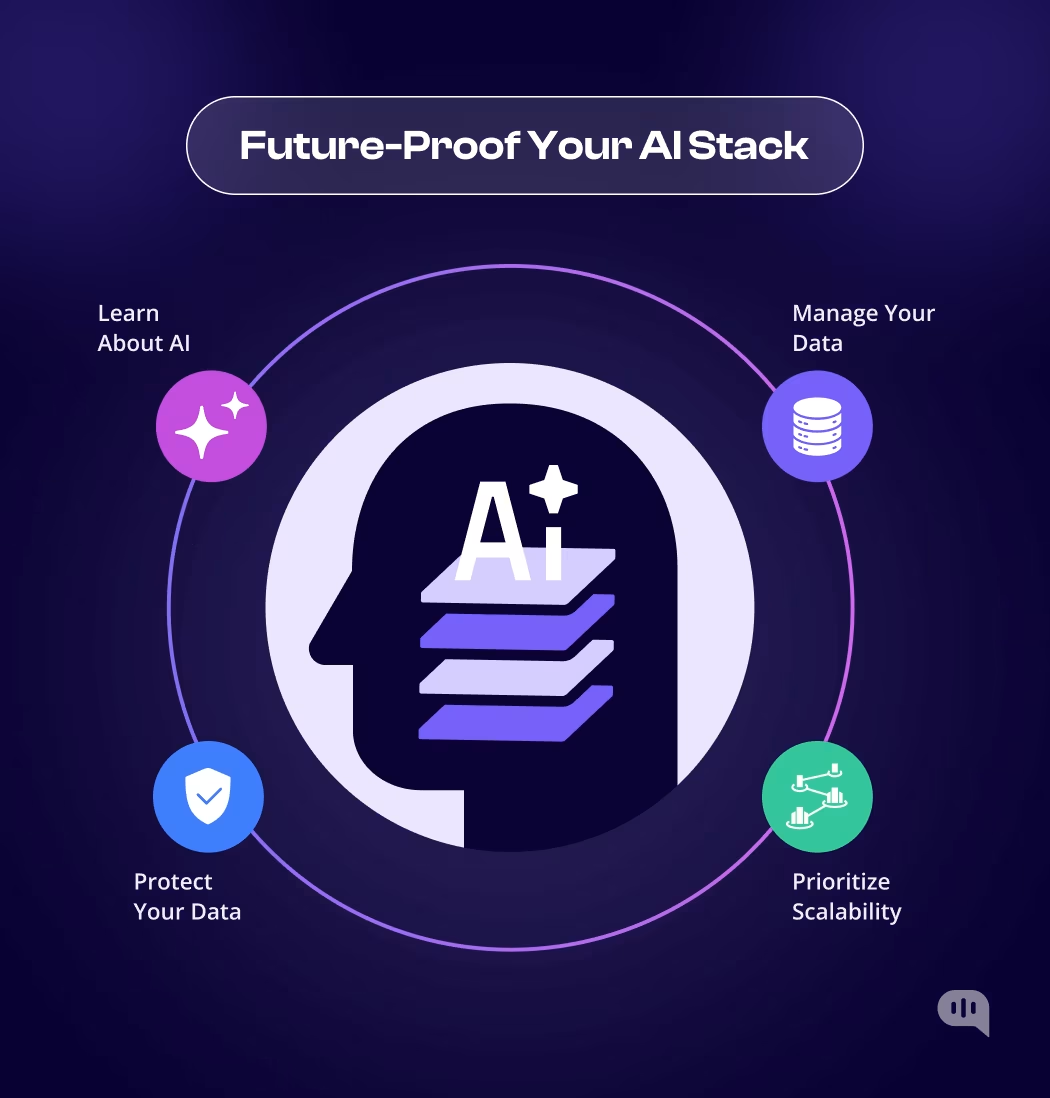
Additionally, there are two things you need to focus on:
1. Prioritize Scalability: AI solutions take up a lot of computational power, so you need to learn to prioritize scalability. Try choosing AI solutions that are inherently scalable (our Gen AI chatbot is an example). Essentially, you need to look for products with low downtime and stress-tested on other enterprise systems to gauge their capabilities at scale.
2. Focus on Data Management: Knowledge management will be vital in deciding how well an AI can understand your documents. Try to address gaps in your content and ensure that all your SOPs are already in place. Regularly hold meetings to understand and document the most successful troubleshooting mechanisms. These updates will further empower an AI chatbot to answer better when facing customers.
These tips should prepare you for a career as an AI-first customer service leader. It will also ensure that your colleagues are comfortable with the AI transitions and make your business more future-proof.
Here’s a quick video on becoming an AI-first customer service leader.
Parting Words
It’s important to remember that an AI-first customer service leader does more than just implement new technology. They develop new leadership skills, address ethical concerns, and undertake continuous learning.
Considering the advancements in AI in the past few years, these skills will be fundamental to the growth of customer service as a discipline. So, for any new leader, these values and practices will form the foundation of their future careers.
And with enough AI-first customer service leaders, customers can expect enterprise-grade personalized customer service from every business they interact with.
Ready to lead the future of customer service with AI?
Discover how Kommunicate’s AI-powered chatbots can help you enhance customer experiences and drive success. Try Kommunicate today!

CEO & Co-Founder of Kommunicate, with 15+ years of experience in building exceptional AI and chat-based products. Believes the future is human + bot working together and complementing each other.

